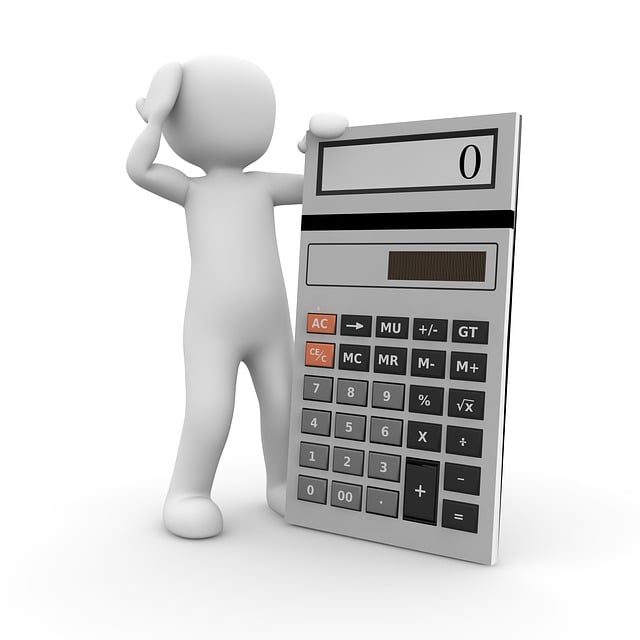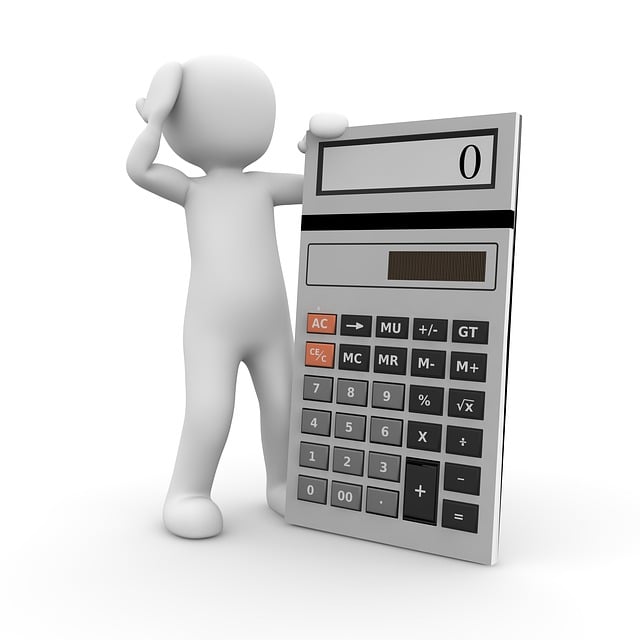How to Calculate Transaction Volume in 2025: A Comprehensive Guide
Author: Jameson Richman Expert
Published On: 2025-08-14
Prepared by Jameson Richman and our team of experts with over a decade of experience in cryptocurrency and digital asset analysis. Learn more about us.
Understanding how to accurately calculate transaction volume is fundamental for traders, investors, and financial analysts aiming to assess market activity, liquidity, and investor interest in 2025. Transaction volume, a vital metric in financial markets, captures the total quantity of assets or securities traded within a specific period, providing insights into market strength, investor confidence, and potential price movements. Whether analyzing rapidly evolving cryptocurrency exchanges, traditional stock markets, or emerging digital asset classes like Non-Fungible Tokens (NFTs) and decentralized finance (DeFi), mastering the calculation and interpretation of transaction volume enhances strategic decision-making, supports effective technical analysis, and helps anticipate future market trends. As markets become more complex with innovations like decentralized exchanges (DEXs), tokenization, algorithmic trading, and cross-platform fragmentation, a deeper, nuanced understanding of volume metrics becomes indispensable for staying competitive and informed.

What is Transaction Volume?
Transaction volume refers to the total amount of a specific asset—such as stocks, cryptocurrencies, commodities, or derivatives—that has been traded over a defined timeframe. This metric can be expressed in units (e.g., number of shares, tokens, or contracts) or in monetary terms (e.g., USD, BTC, EUR). In cryptocurrencies, transaction volume often indicates the total number of coins or tokens exchanged across multiple exchanges or within a particular platform, reflecting overall market activity, liquidity, and investor interest. For traditional financial markets, transaction volume aggregates all shares, futures contracts, or lots traded during a trading session or period, serving as a reliable measure of market participation. Notably, transaction volume is crucial for understanding market sentiment, as high volumes typically signal strong investor interest and liquidity, facilitating efficient price discovery, while low volumes may point to market indecision, potential for higher volatility, or consolidation phases.
Why is Calculating Transaction Volume Important?
Calculating and understanding transaction volume provides a crucial layer of market insight that price data alone cannot offer. For example, a sharp price increase accompanied by high volume suggests genuine buying interest and a sustainable rally, making it more reliable for traders. Conversely, a price surge on low volume might be a false breakout or lack conviction, increasing reversal risk. During downtrends, elevated volume can indicate panic selling or capitulation, often preceding significant declines or reversals, while low volume during declines might signal accumulation and potential bottom formation. Transaction volume underpins many technical analysis tools, such as volume oscillators, On-Balance Volume (OBV), and Volume Weighted Average Price (VWAP), which help traders verify trend strength, confirm breakouts, and gauge market sentiment. In 2025, with increased adoption of algorithmic, high-frequency, decentralized, and cross-platform trading, understanding and analyzing volume data becomes even more critical for making informed decisions, managing risk, and staying ahead of shifting market dynamics.
How to Calculate Transaction Volume?
The methodology for calculating transaction volume varies depending on the asset class, data sources, and trading platforms. Developing a comprehensive understanding of these methods ensures precise measurement and meaningful interpretation of market activity. The calculation approaches differ across markets but share foundational principles:
1. Cryptocurrency Exchanges
In the crypto universe, transaction volume is often reported transparently by major exchanges such as Binance, MEXC, Bitget, and Bybit. Traders can verify or manually calculate this by analyzing granular trade data—including individual trade sizes and prices. The core formula is:
Transaction Volume = Σ (Trade Size in Coins/Tokens × Trade Price at Execution)
For example, if throughout a day, a series of trades exchange 10,000 ETH at varying prices, summing these products yields the total daily transaction volume in USD. Many exchanges offer APIs, real-time dashboards, and third-party analytics platforms that automate this calculation, providing traders with instantaneous insights. Moreover, analyzing order book depth, trade history, and liquidity pools grants a more comprehensive view of current market activity, especially vital during periods of high volatility or rapid price swings common in digital assets.
2. Traditional Stock and Derivatives Markets
In traditional markets, transaction volume is aggregated and published at the end of each trading session by exchanges like NYSE, NASDAQ, or via data providers such as Bloomberg and Reuters. To manually estimate transaction volume, traders sum the volume of all executed trades or analyze Level 2 order book data for insights into market depth. The core formula is:
Transaction Volume = Sum of all shares, futures contracts, or lots traded during the session
Access to detailed trade data allows for precise calculation, where each trade's volume is accumulated over the trading day. Deep analysis of the order book at different price levels reveals liquidity distribution, potential support and resistance zones, and trader activity trends, aiding strategic decision-making and risk management.
3. Using Trading Platforms and APIs
Modern trading platforms—such as TradingView, MetaTrader, and proprietary exchange interfaces—offer built-in volume indicators and visual tools that simplify volume analysis. For advanced needs, APIs from major exchanges like Binance, Coinbase, Kraken, or Deribit provide real-time data streams for automated monitoring. Developers leverage these APIs to build custom dashboards, trading bots, or analytical models that track volume patterns, detect anomalies, and execute trades based on predefined criteria. Given the speed and volume of data in 2025's highly digitized markets, understanding how to extract and interpret raw volume data directly from these sources is crucial for high-frequency and quantitative traders.

Understanding Market Liquidity and Transaction Volume
High transaction volume correlates strongly with market liquidity—the ease of executing large trades without significantly impacting prices. Enhanced transparency through blockchain technology, DEX reporting, and real-time analytics in 2025 will further illuminate liquidity profiles across multiple trading venues. As markets fragment across centralized exchanges, decentralized platforms, OTC desks, and cross-chain bridges, aggregating data becomes essential to gauge true market activity. Greater transparency not only facilitates better execution strategies but also reduces the risks of slippage, manipulation, and false signals, improving overall market efficiency.
Tools and Resources for Calculating Transaction Volume
Numerous tools empower traders to analyze transaction volume effectively:
- TradingView: Provides volume overlays, indicators like OBV, and historical analysis tools to confirm trends and divergences.
- CryptoMarketCap, CoinGecko, CryptoCompare: Aggregate cross-exchange 24-hour volumes, offering a macro view of market activity and liquidity trends.
- Exchange APIs: Enable real-time data retrieval for custom, automated volume tracking and algorithmic trading integration.
- Bloomberg Terminal & Thomson Reuters: Deliver high-resolution, professional-grade analytics, including detailed volume metrics and customizable dashboards for institutional traders.
Leveraging these tools allows traders to visualize volume trends, authenticate trading signals, and design data-driven strategies suited for the evolving market conditions in 2025, especially vital in high-volatility sectors like DeFi and tokenized assets.
Practical Tips for Traders in 2025
- Always analyze transaction volume alongside price movement; divergence often signals potential reversals or false signals.
- Utilize volume-weighted indicators such as VWAP, OBV, and Accumulation/Distribution to refine trade timing and confirmation.
- Compare transaction volumes across multiple exchanges and platforms to identify genuine interest, arbitrage opportunities, or signs of market manipulation.
- Monitor real-time API data for sudden shifts in activity—crucial during events like protocol upgrades, liquidity migrations, or macroeconomic announcements affecting crypto and traditional markets.
- Stay informed about technological innovations—such as tokenized assets, Layer 2 scaling solutions, cross-chain interoperability, and DeFi protocols—that significantly influence transaction volume dynamics and market participation.

Conclusion
As we advance into 2025, mastering the calculation and nuanced interpretation of transaction volume remains essential for successful trading and investing. Whether navigating traditional equities, cryptocurrencies, NFTs, or complex DeFi ecosystems, a deep understanding of volume metrics enhances our ability to assess market liquidity, validate trends, and interpret investor sentiment accurately. Technological innovations like blockchain transparency, decentralized exchanges, and sophisticated analytics tools empower traders with unprecedented visibility into market activity. Integrating these insights into your trading strategies facilitates better risk management, opportunity identification, and agility in response to rapid market changes. Ultimately, transaction volume is more than just a number—it is a vital signal that captures the heartbeat of modern markets, guiding informed decisions in the dynamic financial environment of 2025 and beyond.